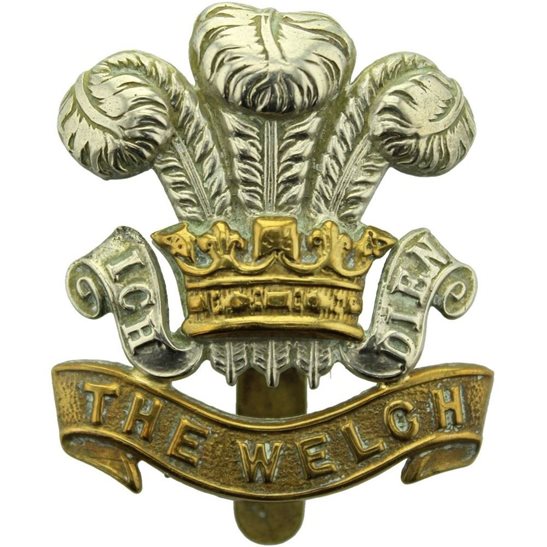Personal Details
Born: 7 January 1875 in Whitchurch, Shropshire and baptised 5 February that year, with his sister, Louisa Margaret, in St. Alkmund’s Parish Church.
Family: He was the fourth of ten children born to Henry Cork, a master plumber, and his wife Sarah Jane. He married Bessie Jones on 30 March 1908 at Buxton, Derbyshire. No children can be traced for the marriage.
Residence: When he was baptised, the family were living in Watergate Street, Whitchurch, Shropshire. By 1881 they had moved to Barkhill, Whitchurch and by 1891 back to Watergate Street. The 1901 Census shows him in military service in India and by 1911 he was living at the Cardiff Barracks, Cardiff, Glamorganshire, Wales. In 1939 he was living at 329 Chester Road, Aldridge, Derbyshire.
Employment: In 1891 he was a grocer’s assistant; when he enlisted in 1894 he declared his occupation as glazier. In 1911 he was a waiter in the officer’s mess and the 1939 Register showed him as a retired army caterer.
Died: March 1961 in Cardiff, Glamorganshire, Wales, aged 86.
Military Details
Regiment: Welsh Regiment
Rank: Sergeant
Service Number: 4187
Date of Enlistment: 31 January 1894
Date of Discharge: 27 June 1918
Reason for Discharge: No longer physically fit for war service
Ernest was awarded the Campaign Medals (British War Medal and Victory Medal) and the Silver War Badge.

The British War Medal (also known as 'Squeak') was a silver or bronze medal awarded to officers and men of the British and Imperial Forces who either entered a theatre of war or entered service overseas between 5th August 1914 and 11th November 1918 inclusive. This was later extended to services in Russia, Siberia and some other areas in 1919 and 1920. Approximately 6.5 million British War Medals were issued. Approximately 6.4 million of these were the silver versions of this medal. Around 110,000 of a bronze version were issued mainly to Chinese, Maltese and Indian Labour Corps. The front (obv or obverse) of the medal depicts the head of George V. The recipient's service number, rank, name and unit was impressed on the rim.
The Allied Victory Medal (also known as 'Wilfred') was issued by each of the allies. It was decided that each of the allies should each issue their own bronze victory medal with a similar design, similar equivalent wording and identical ribbon. The British medal was designed by W. McMillan. The front depicts a winged classical figure representing victory. Approximately 5.7 million victory medals were issued. Interestingly, eligibility for this medal was more restrictive and not everyone who received the British War Medal ('Squeak') also received the Victory Medal ('Wilfred'). However, in general, all recipients of 'Wilfred' also received 'Squeak' and all recipients of The 1914 Star or The 1914/1915 Star (also known as 'Pip') also received both 'Squeak' and 'Wilfred'. The recipient's service number, rank, name and unit was impressed on the rim.

The Silver War Badge was issued in the United Kingdom and the British Empire to service personnel who had been honourably discharged due to wounds or sickness from military service in World War I. The badge, sometimes known as the "Discharge Badge", the "Wound Badge" or "Services Rendered Badge", was first issued in September 1916, along with an official certificate of entitlement.

